
Wahoo has announced their new Wahoo BOLT 3 and Wahoo ROAM 3 bike computers, which essentially is moving the BOLT & ROAM-sized devices onto the ACE software and display platform. The goal here being that Wahoo’s three bike computers going forward (ACE, ROAM, BOLT), all share the same software platform and screen technologies – in much the same way that Wahoo has done so in the past on the previous generation units.
This means that from a feature standpoint, there are actually no new features on the BOLT 3 & ROAM 3. At least, new features that you haven’t already seen on the ACE. Wahoo has spent the last 5 months trying to get the ACE back to feature-parity with previous devices, after launching it mostly underbaked in December. At this point, I think the majority of those features are now there. But, these new units do lack the secondary hardware LEDs found on previous Wahoo devices to indicate zones and other actionable data. For some users, that’s a big deal – for others, it’s a shrug (me). Instead, Wahoo has driven that functionality into the main display area.
Now, before we get into some of the hardware on both of them, note that neither is actually available to purchase right now. Both these units are slated to go on sale on May 6th. Why announce now, then? Simple: They’re about to run out of inventory of existing bike computers, and expect a gap in hardware availability. In other words, they got themselves into the same pickle that Hammerhead did last year, where they sold through the last batch of existing inventory too fast and ended up with a gap in supply.
Lastly, it’s worthwhile noting that Wahoo also announced their new TRACKR RADAR, which is their first radar/light device. The unit does have some unique features that we’ve seen scattered in a few different lesser-known competitor products, such as brake light action using accelerometers. But there are also some new bits, like saving battery on the bike light when there are no cars around, by turning it off. More on that in a separate post here shortly.
Now, before we get into it, note that the units I have been riding with have pre-production (beta) firmware, with the planned final firmware not coming until April 14th. As such, this isn’t a review. Given these units are beta, they’re gonna have issues (and yes, they do). I’ll do a review closer to the planned sales date of May 6th, with what I hope by then will be final-final firmware. So, as per the title, just a first look/hands-on style thing. Make sense?
The Key Differences:
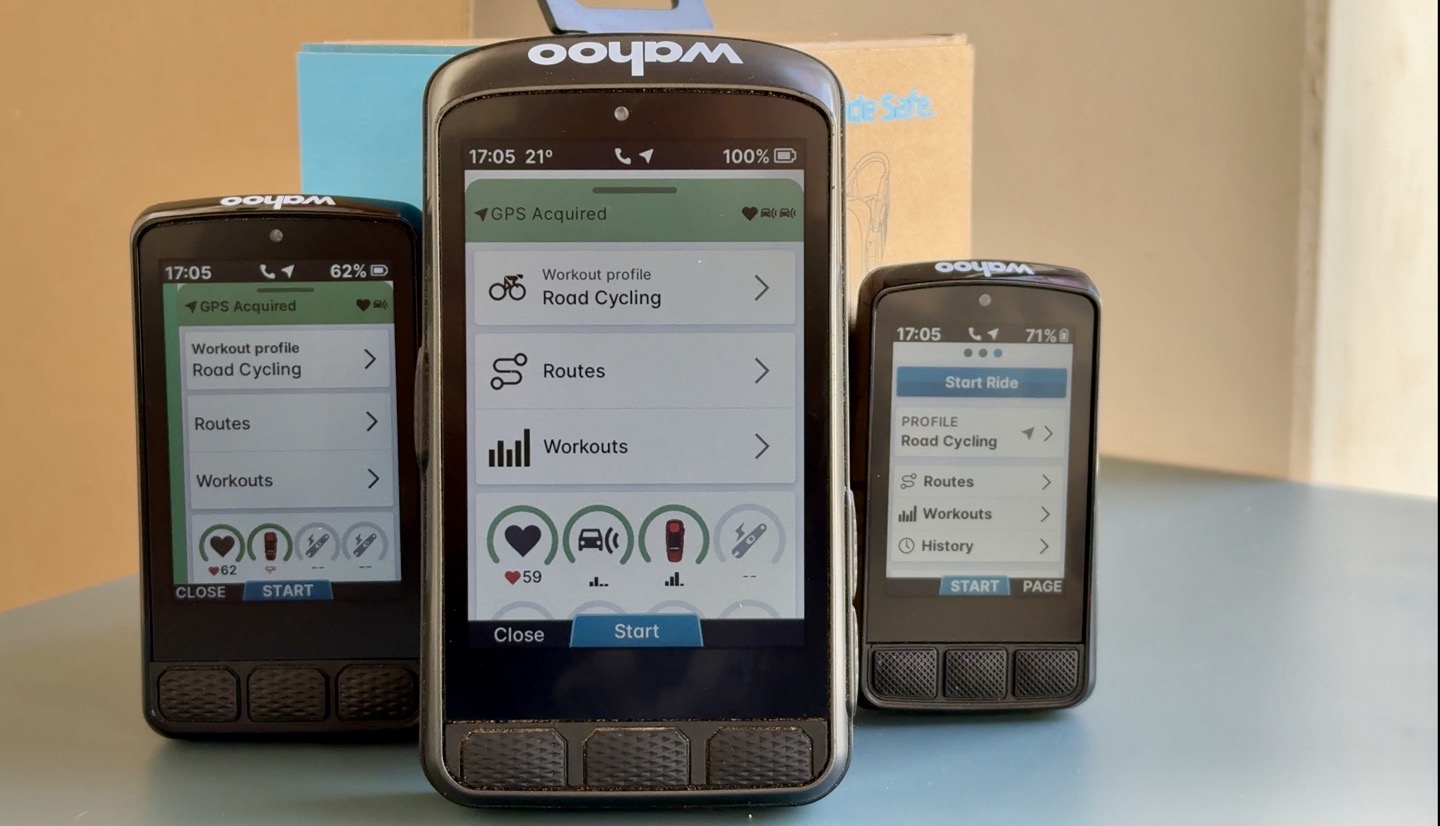
So what’s the key difference between the three units then? Well, in short: Wind sensor, touchscreen, and speaker type. Oh, and of course, price. This nifty little chart from Wahoo actually does a pretty good job distilling this all down:
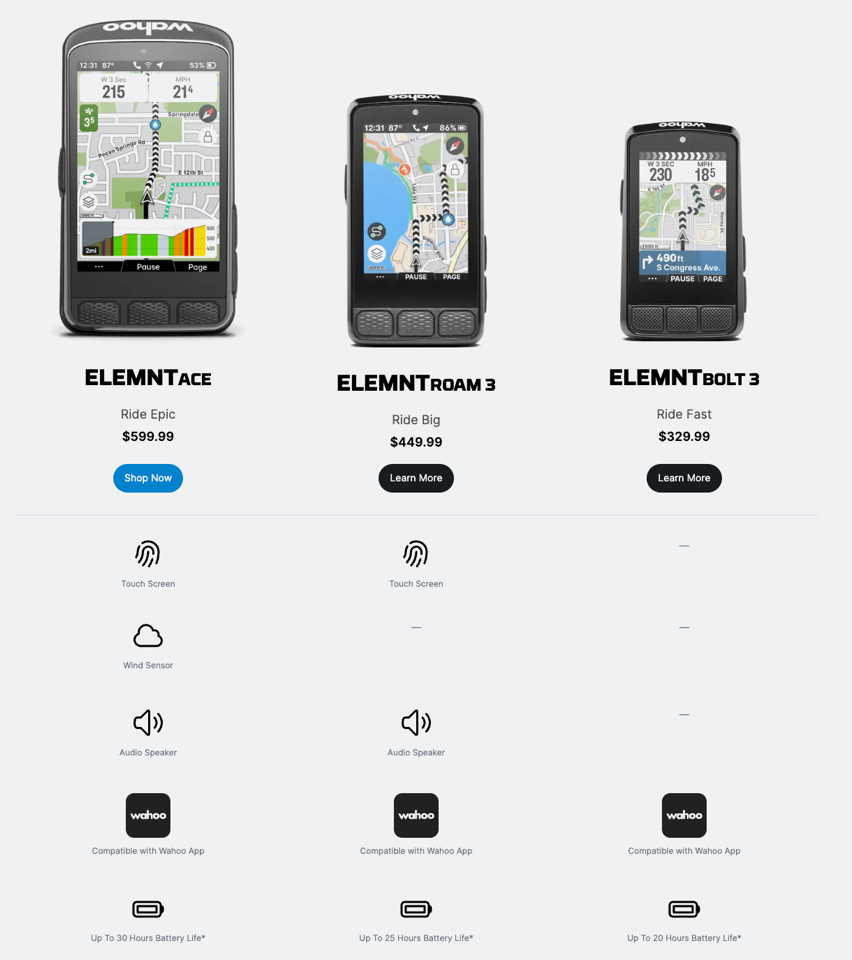
Basically, the base BOLT doesn’t have a touchscreen or spoke-word-speaker (it does have a beeper). Whereas the ROAM & ACE both have touchscreens and proper speakers. And only the ACE has a wind sensor.
There are battery differences between these units, though practically speaking in my testing of ACE, I’m consistently seeing battery life at roughly half of the claimed battery life. For example, on a recent 6-hour ride without navigation, I went from 100% to 70% (indicating ~20hrs battery life), on another 6-hour 45-minute ride it went down from 100% to 55%, on track for about 15 hours or so.
The current ROAM & BOLT units I have are still on pre-production firmware until sometime next week. This will be a key thing I’m looking at in my review cycle, and thus I’m hoping that between now and then, these units can find some dramatic battery burn improvements.
The Wahoo ROAM 3:
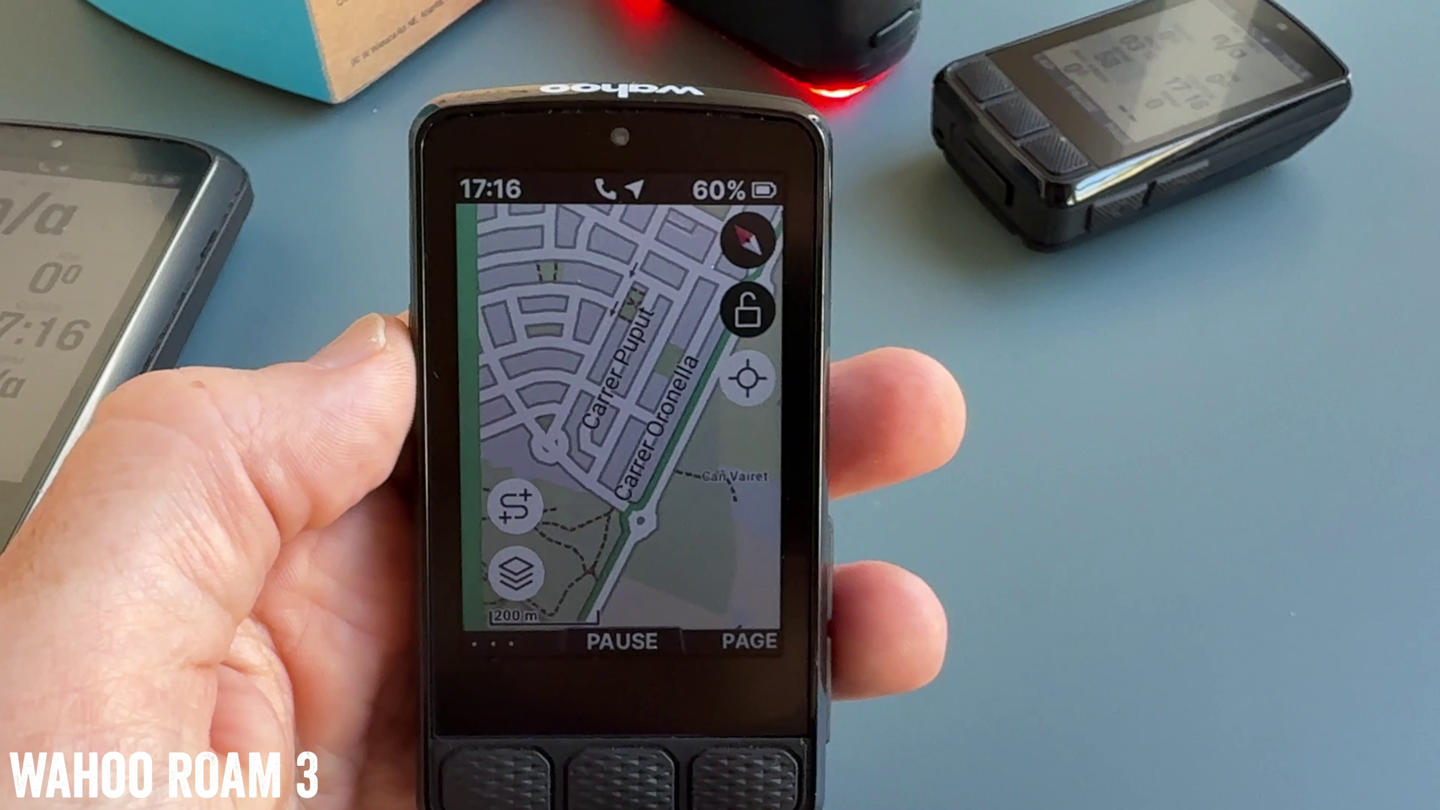
So starting with the ROAM 3, this unit adapts the same screen technology/displays seen on the larger Wahoo ACE, including the touchscreen portion. It also retains the speaker (inclusive of bike bell) seen on the Wahoo ACE. It does not get the wind sensor, though after 6 months of usage of the Wahoo ACE’s wind sensor, I’ve yet to find much value in it (and it often seems blatantly wrong). So, I don’t see that as a major loss.
Pricing-wise, the unit did increase over the existing Wahoo ROAM 2, though it is basically in line with the Hammerhead Karoo 3 and Garmin Edge 840.
Starting off with what’s different compared to the existing ROAM V2, we’ve got the following items:
– Increased display size from 2.7” to 2.8″
– Increased display colors from 64 colors to 16 million colors
– Added touchscreen
– Added speaker with loud bike bell
– Added voice navigation prompts
– Added street names to maps
– Added map layers option (POI, Custom Waypoints, Street Names, Summit Segments, Strava Segments)
– Added Activity Profiles (e.g., Road/MTB/etc…)
– Added new sensor pairing dashboard
– Added time of day to upper edge, and always on screen
– Changed to using the Wahoo App (as opposed to Wahoo ELEMNT app)
– Revamped the ‘Ready to Ride’ dashboard
– Removed upper status LEDs
– Increased weight from 93g to 108g
– Slightly redesigned bezels/physical dimensions
– Increased claimed battery life from 17hrs to 25hrs
So, let’s take a look at a quick side-by-side with the older ROAM, so you can see how these two compare:
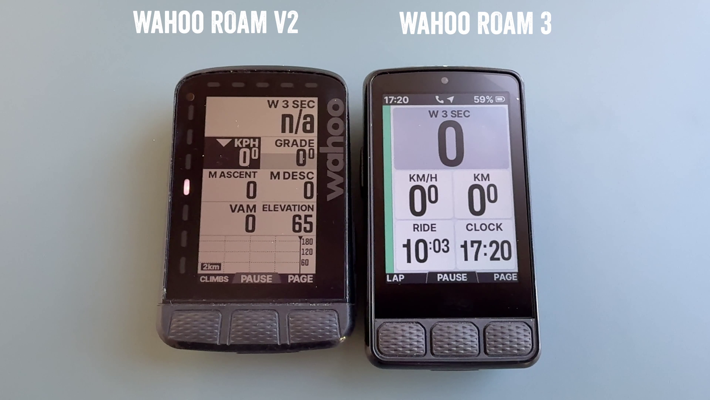
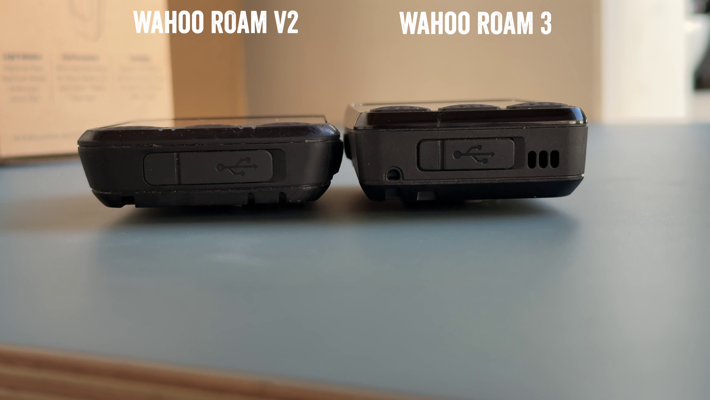
Obviously, the biggest difference is that display. With the new display, you get waaaaay more colors, and of course, the totally revamped user interface seen on the ACE. I find this new user interface to still be fairly slow for configuration-related changes (e.g. swiping between settings pages), but is otherwise good once I start riding.
The ROAM 3 display has three brightness levels, Low/Medium/High, and I found that riding outside in the sun, you pretty much need to be in the High mode (which is the default). Just with the ACE, if the backlight goes off (by default it’s always on), things get unreadable quick.
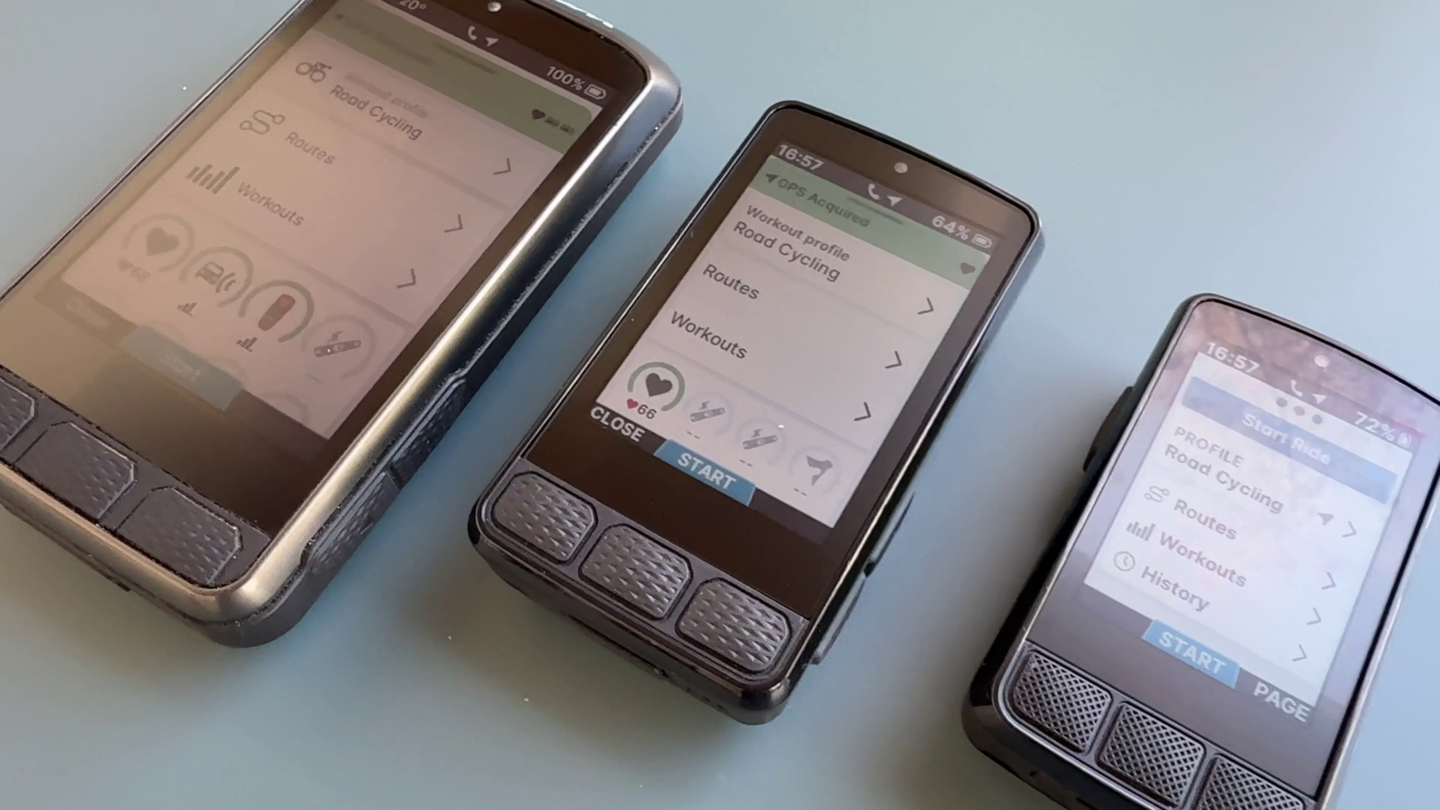
Taking photos of displays is always tricky, especially given how much the computation element of cameras will enhance the image. It’s easier seeing it side-by-side with other displays, like this ride where the Garmin Edge 1050 is on auto-backlight at a much lower level (roughly 30-40%), and the Wahoo units are at full brightness.
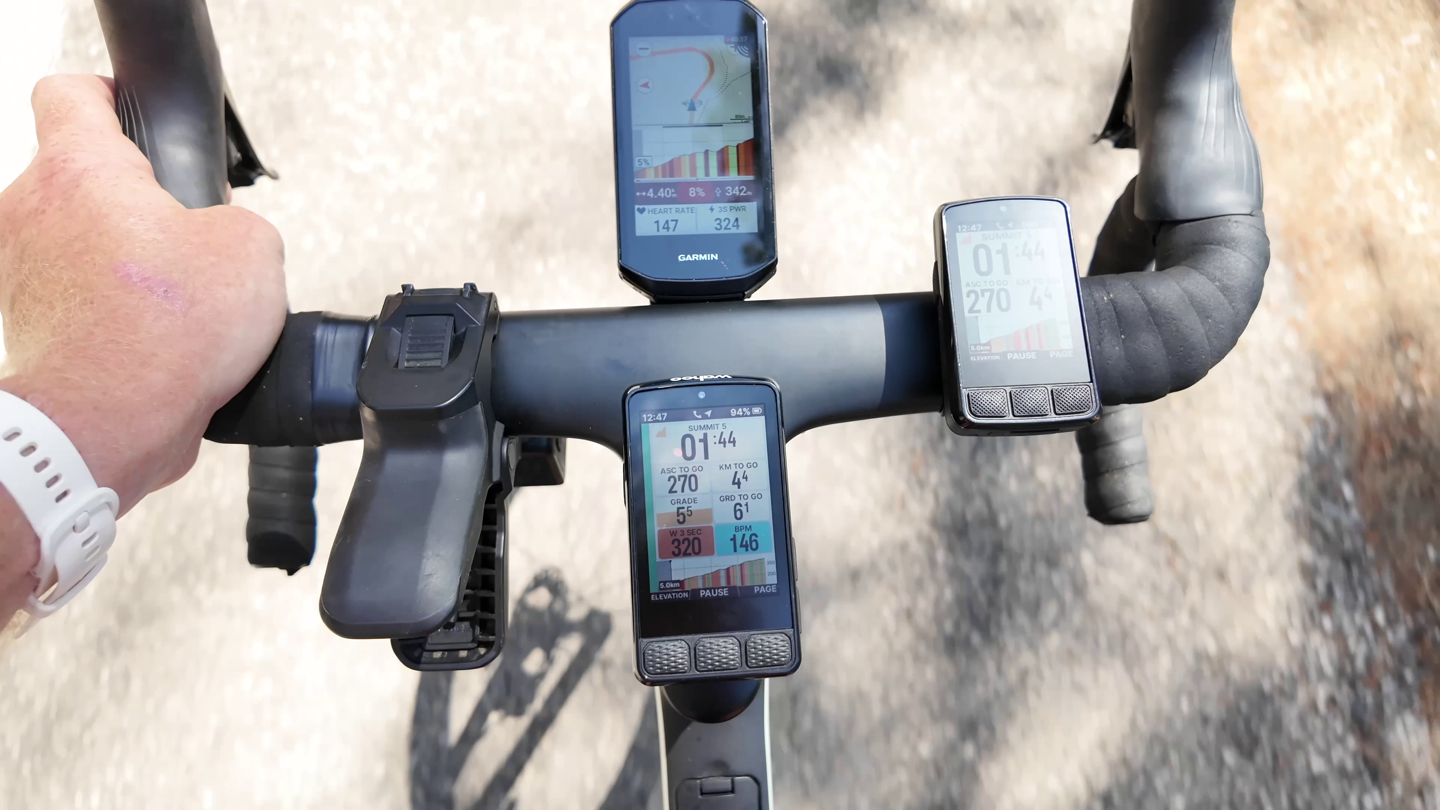
I show the Edge 1050 display here, which is obviously Garmin’s top-end device and newer display than their mid-range Edge 840 (or lower Edge 540). But if history proves itself out, we’ll undoubtedly see Edge 850 and Edge 550 devices at some point probably sooner rather than later, and I’d be very surprised if they didn’t have the same display as the Edge 1050. Garmin’s device lineage is incredibly predictable. And equally, there’s no disagreement that the Edge 1050 display tech is bonkers bright/clear, well beyond anything in the market today.
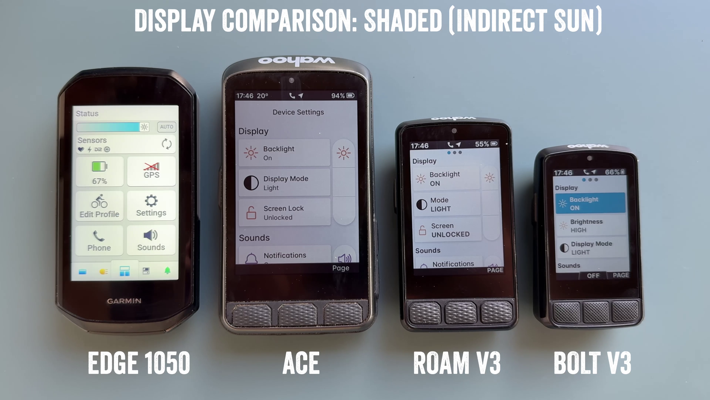
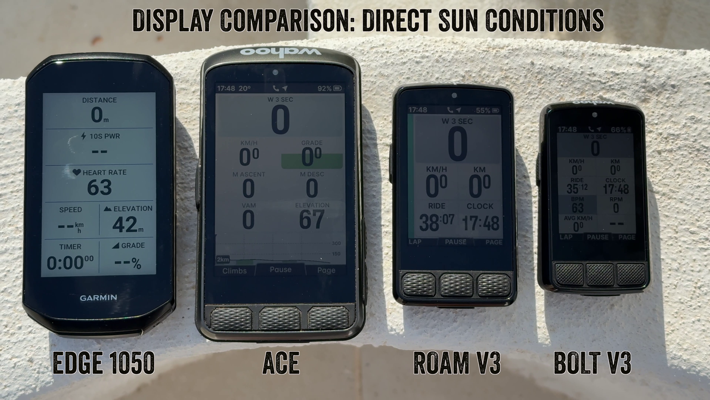
Equally, I had centered myself in the middle of this group, but with the sun, the outer units (such as the BOLT V3) become less visible slightly off-set. Some of that is camera, and some of that is real, like below with the ROAM V3:
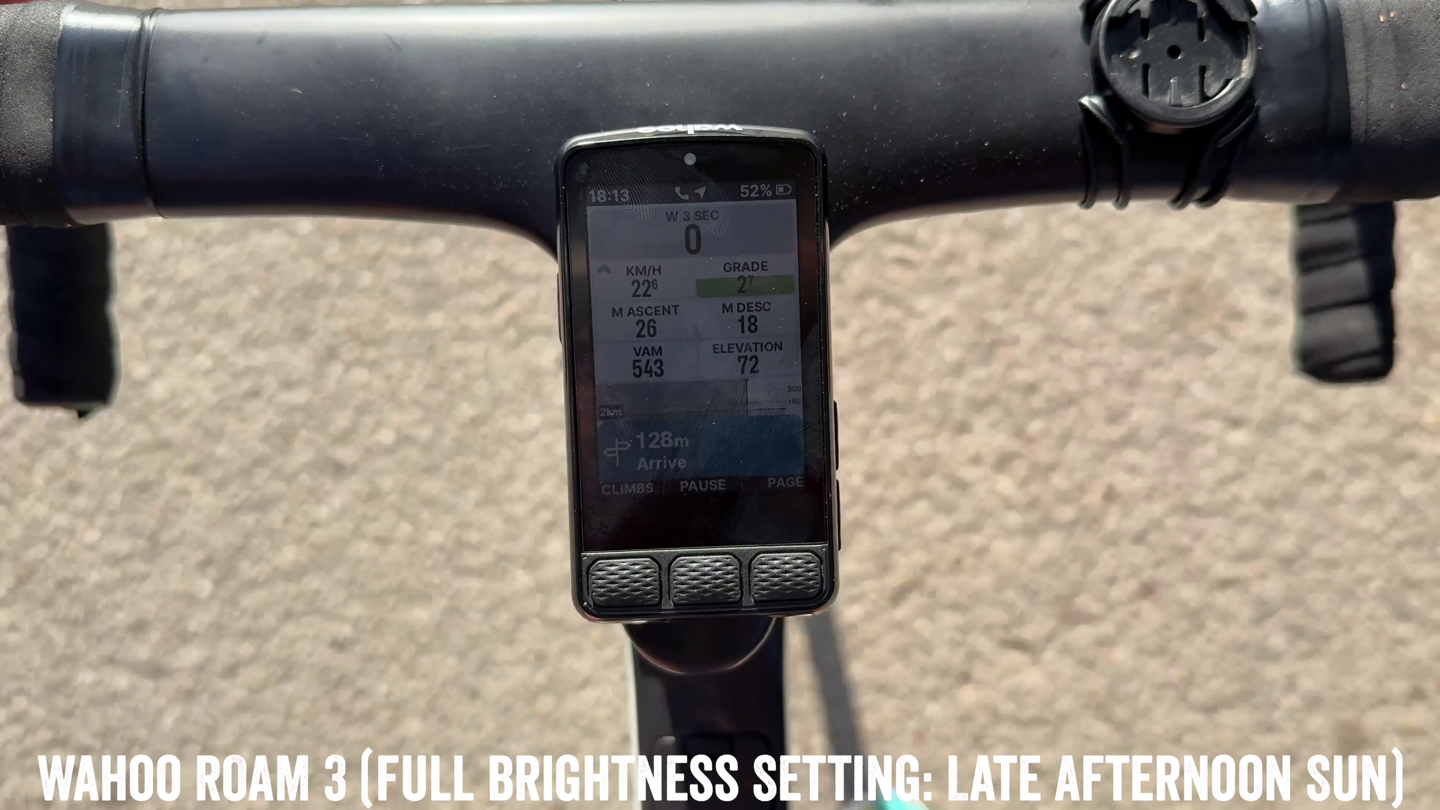
In any case, out riding the last week with it, things worked overall pretty much as expected. It’s basically just a mini-ACE. Again, as noted, the software is currently beta, so I won’t (yet) judge it on its beta quirks. That’ll come later in the final version.
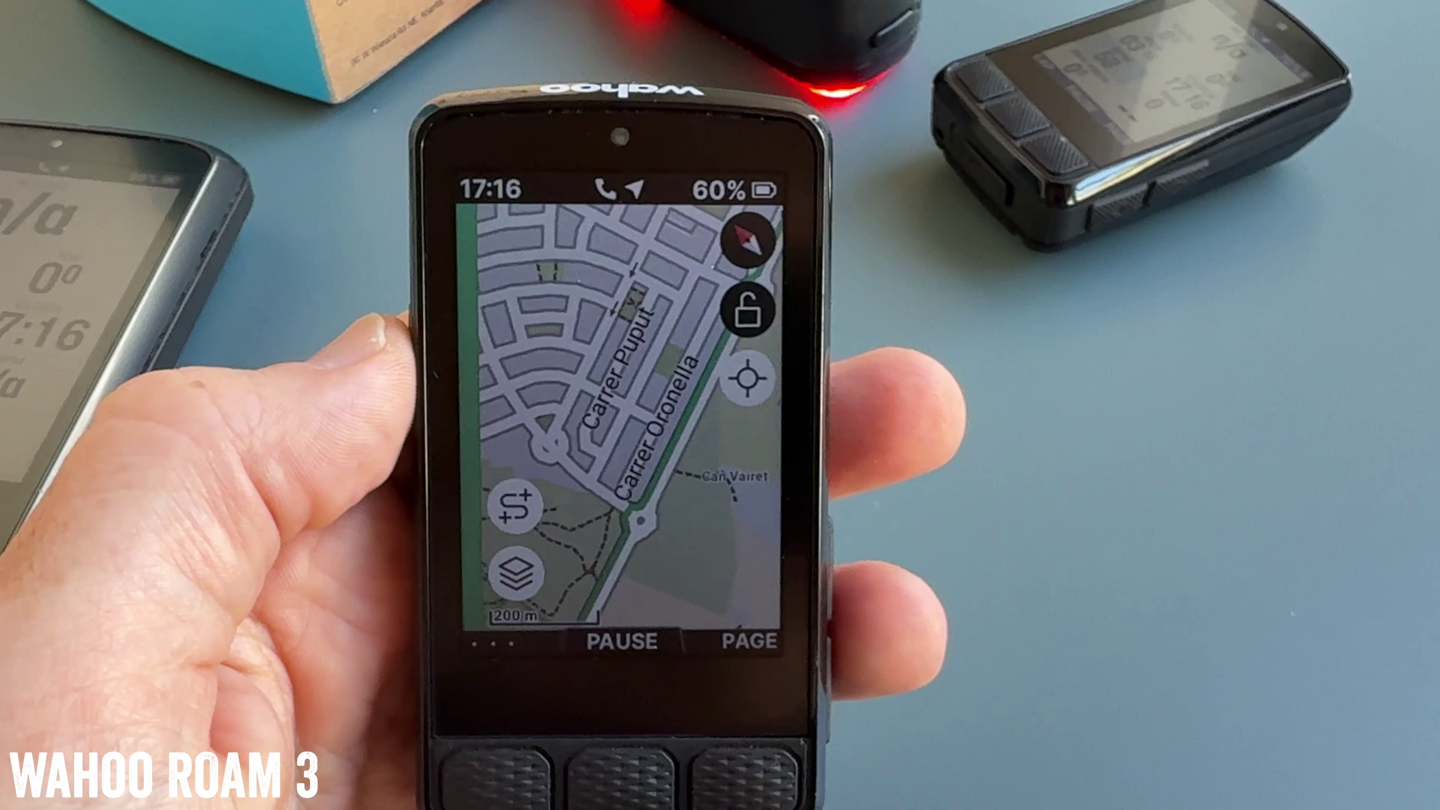
Still, the new speaker was plenty loud, easily alerting me to traffic from the new radar, and other bits of chirpful entertainment, like when an upcoming climb triggered.
When it comes to the mount, it is new as well. Oddly, I don’t have an older ROAM mount with me (in the process of moving, that didn’t make the cut on the priority list). However, it definitely feels chunkier. It seems like that honey-comb like structure at the base is contributing some serious Dunkin’ Donut-like energy.
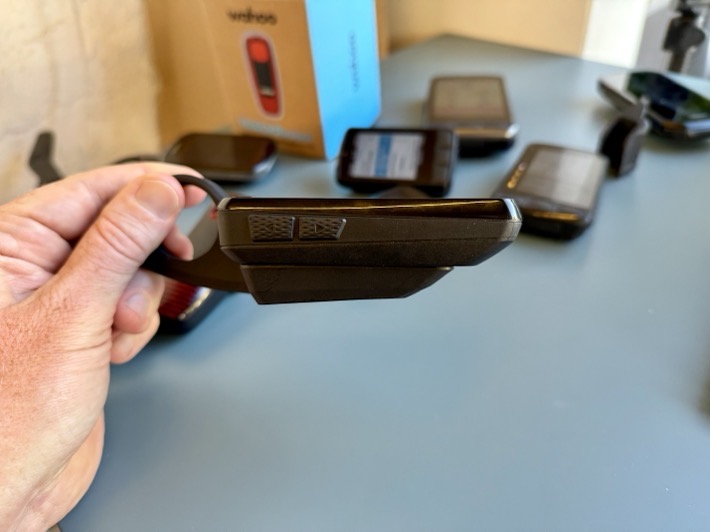
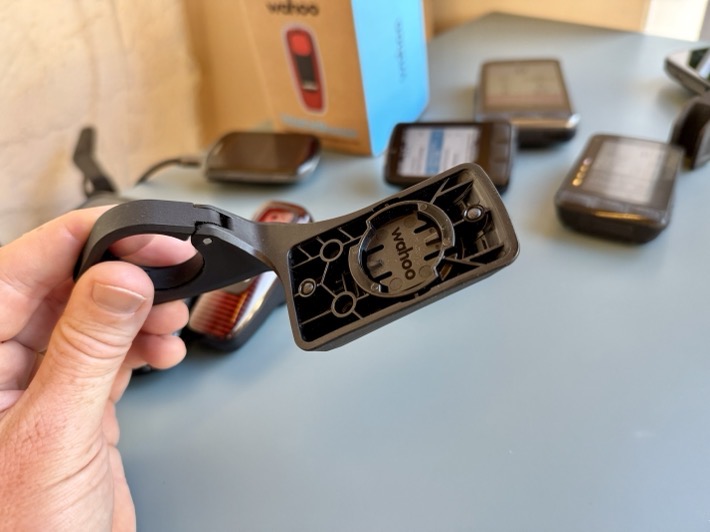
In my case, I’ve just been using other mounts anyway, since I don’t have round handlebars on anything except my mountain bike. But the good news is Wahoo kept the mounting point on the new ROAM/BOLTs the same. Meaning any existing Wahoo or Wahoo-compatible mount will continue to work just fine.
The Wahoo BOLT 3:
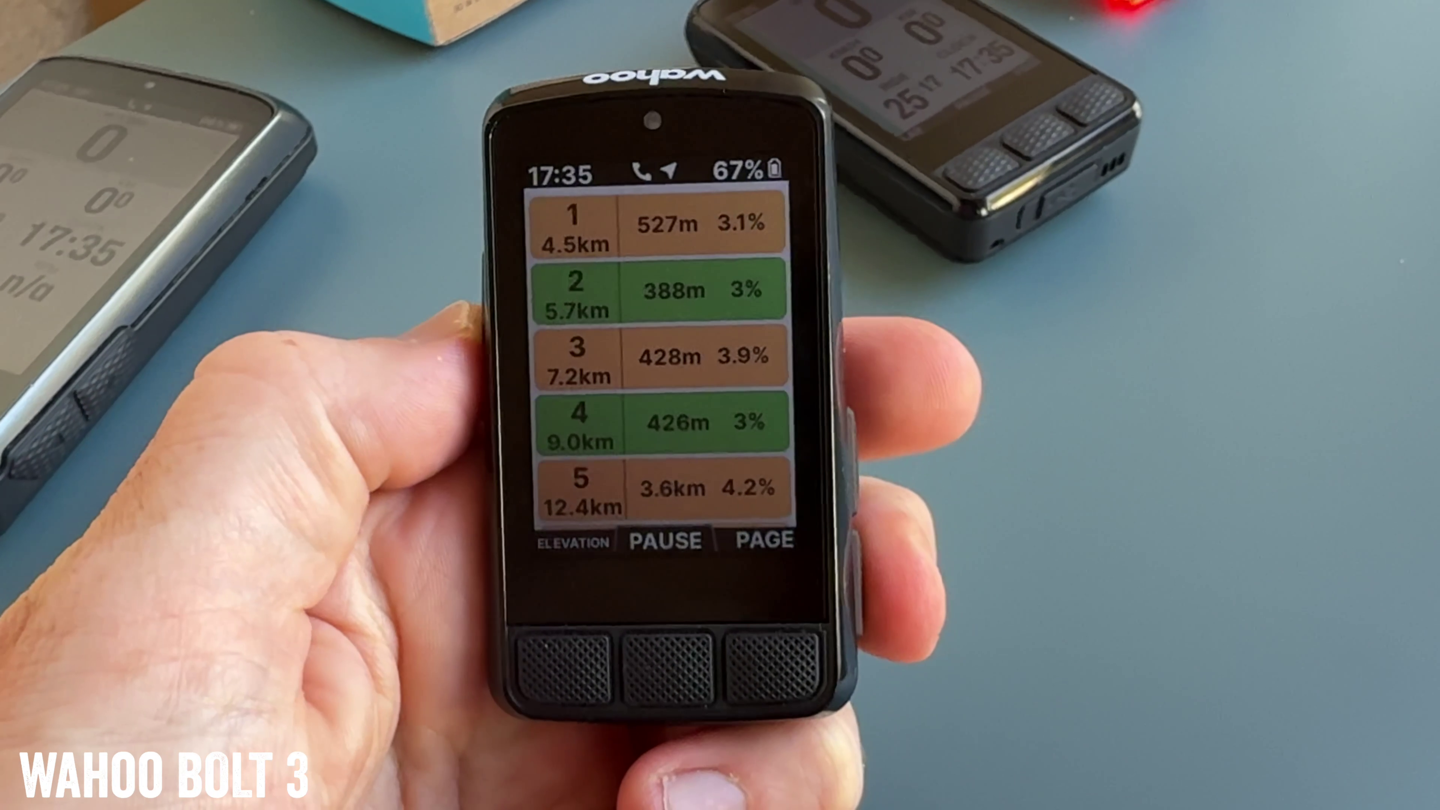
Next up is the BOLT 3, which cuts down the features a bit more on the hardware side. As with the ROAM 3, there’s no wind sensor, but further here, there’s no touchscreen or proper speaker. Meaning, it has a beeper for alerts, but it can’t produce spoken words like the ROAM 3 and ACE can, which can be used in navigation prompts. But, notably compared to the BOLT V2, the V3 version now has the following improvements:
– Added multi-band/dual-frequency GPS (the ROAM V2 had it already)
– Increased display size from 2.2” BOLT V2 to 2.3” on BOLT 3
– Increased display colors from 64 colors to 16 million colors
– Added street names to maps
– Added map layers option (POI, Custom Waypoints, Street Names, Summit Segments, Strava Segments)
– Added new sensor pairing dashboard
– Added Activity Profiles (e.g., Road/MTB/etc…)
– Added time of day to upper edge, and always on screen
– Changed to using the Wahoo App (as opposed to Wahoo ELEMNT app)
– Revamped the ‘Ready to Ride’ dashboard
– Removed upper status LEDs
– Increased weight from 68g to 84g
– Slightly redesigned bezels/physical dimensions
– Increased claimed battery life from 15hrs to 20hrs
First up, here’s a side-by-side look at the BOLT V2 and BOLT 3, comparing them, the BOLT 3 is just slightly thicker (deeper).
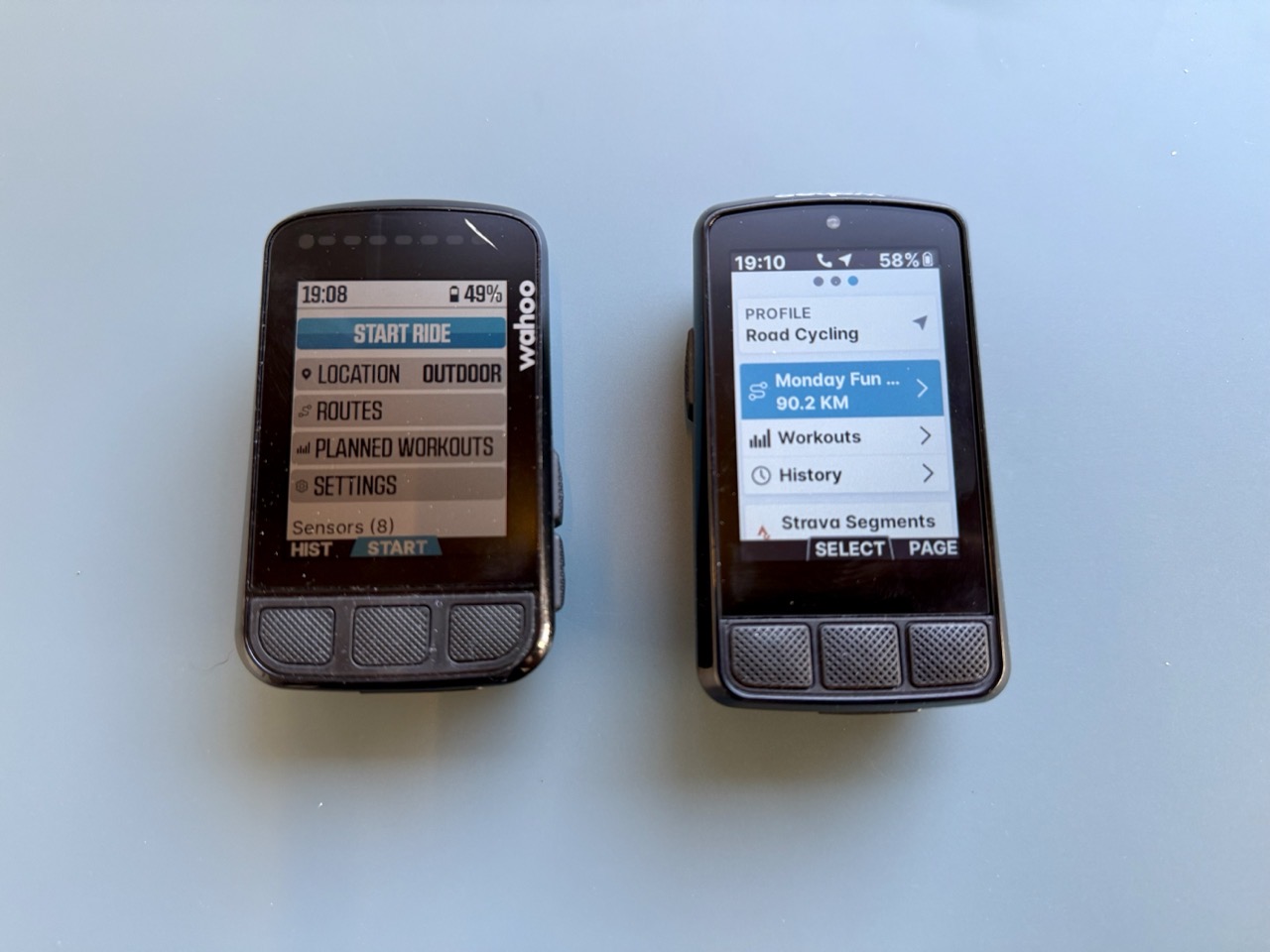
Now obviously, given the smaller display than the ROAM, things are a bit more squished here. Still, it doesn’t feel uncomfortably so. I like it.
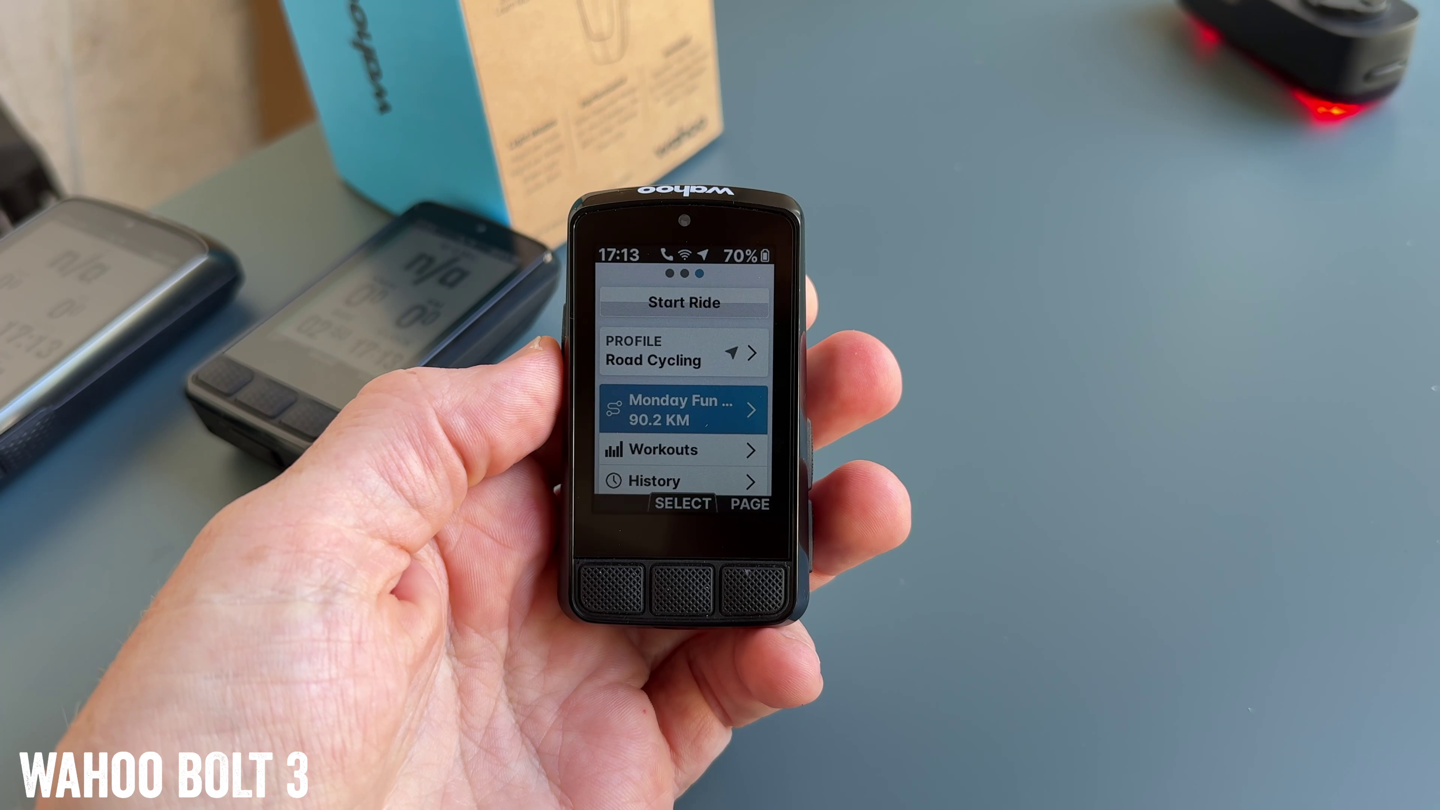
Likewise, despite not having touchscreen, it hasn’t bothered me. In fact, so far (especially after the most recent beta firmware update this past weekend, which fixed a few quirks), the button-only functionality is super clean. Far better than when Garmin, at launch, tried to button-only the Edge 840 touchscreen UI onto the Edge 540 button-only device. Sure, over time Garmin sorted out those quirks, but the buttons-only here is working out well.
Wrap-Up:
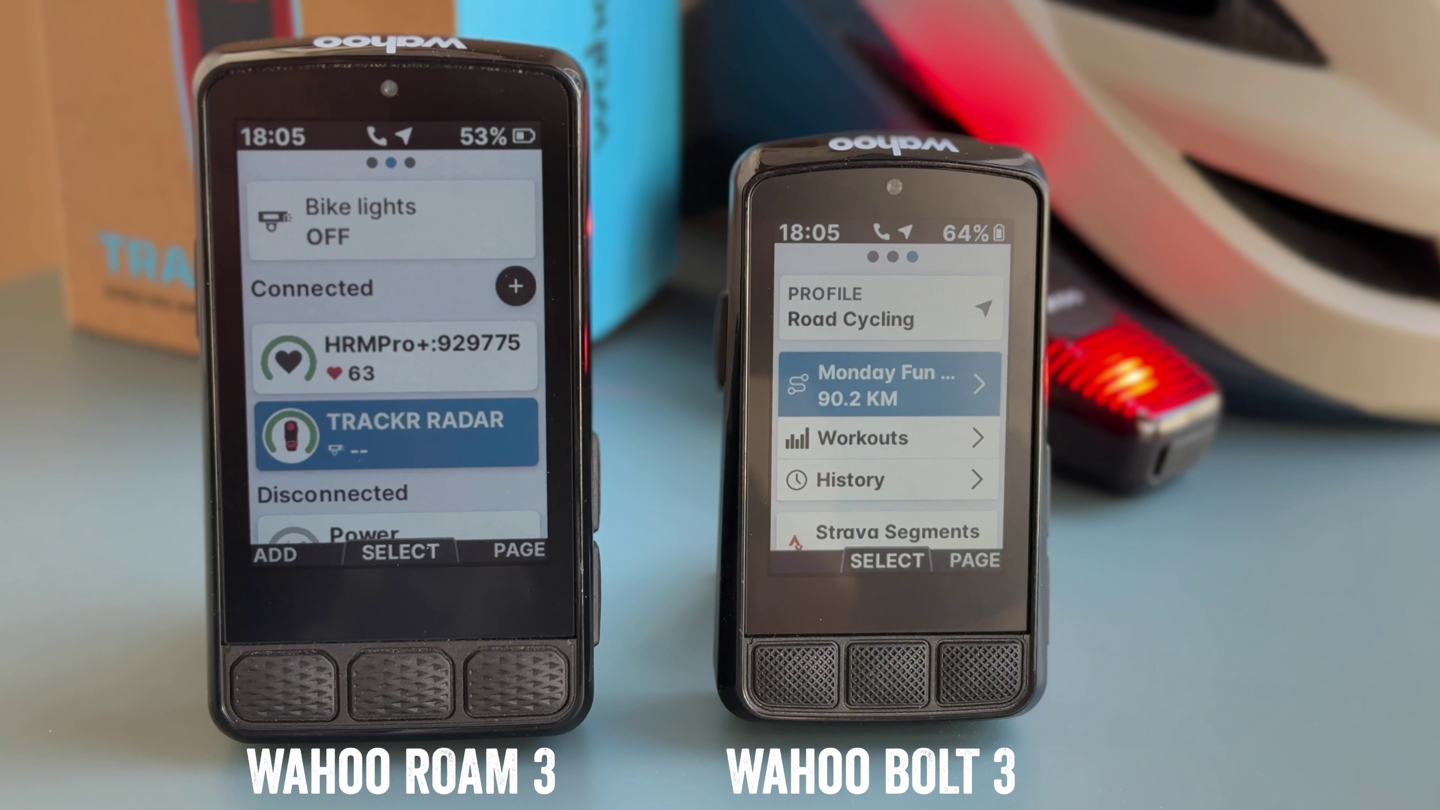
As noted at the start, this launch is all about updating the hardware on the BOLT & ROAM, to allow them to have a single software platform for software development going forward. Of course, that means that existing units won’t really see any notable features going forward. It also means that this update is less about new features.
As seen above, almost all of the new features relative to the BOLT V2 & ROAM V3 are related to user interface differences. Certainly, there are elements like adding street names and map layers that are real and tangible. But we aren’t seeing the big slate of features we often see with new bike computer launches. And in some ways, that’s a bit of an industry trend for some players. We saw the same with the Karoo 3 launch, basically being a hardware refresh due to an ever-constant software update cycle (good on Hammerhead). Whereas Garmin tends to focus on big splashy releases that have both new hardware and new software features. In Wahoo’s case specifically though, they’ve really had to spend the last 5 months since ACE in getting back features that weren’t in the new platform.
Hopefully though, with those pieces largely behind us, we’ll see them start adding new features again. After all, Wahoo is in the business of selling cycling devices, and given most bike computers tend to last a really long time. So driving innovation is key to driving forward business…at least in this industry.
Of course, to be clear, the biggest thing (that I can’t emphasize enough) is whether or not Wahoo can solve the greater platform quirks across ACE/ROAM/BOLT. If I look at ACE over the last month, I’ve had plenty of issues, including repeated sensor failings (losing all sensors during a ride), crashes, and route sync issues. And that’s before we talk about the battery burn being roughly half the claimed range. This is the same platform as ACE, and I’ll be keen to see if it can escape those issues.
With that, it’s sunny out, so I’m headed out for another ride with a ton of bike computers on my handlebars, and too many radars under my butt. Stay tuned for a full in-depth review of all these devices down the road.
Thanks for reading!
FOUND THIS POST USEFUL? SUPPORT THE SITE!
Hopefully, you found this post useful. The website is really a labor of love, so please consider becoming a DC RAINMAKER Supporter. This gets you an ad-free experience, and access to our (mostly) bi-monthly behind-the-scenes video series of “Shed Talkin’”.
Support DCRainMaker - Shop on Amazon
Otherwise, perhaps consider using the below link if shopping on Amazon. As an Amazon Associate, I earn from qualifying purchases. It doesn’t cost you anything extra, but your purchases help support this website a lot. It could simply be buying toilet paper, or this pizza oven we use and love.






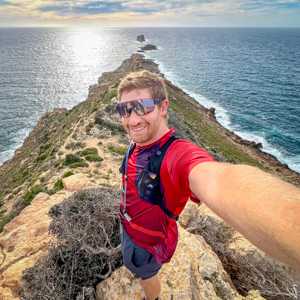





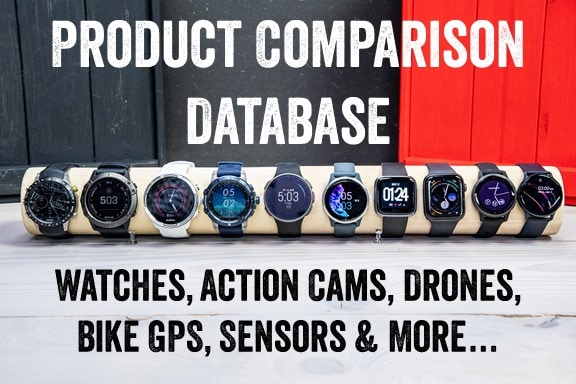
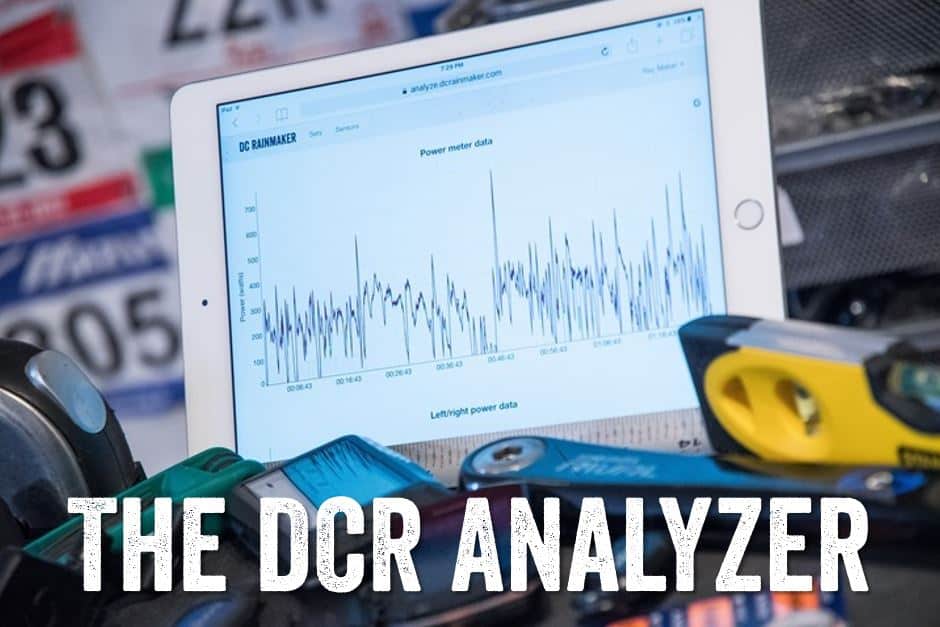

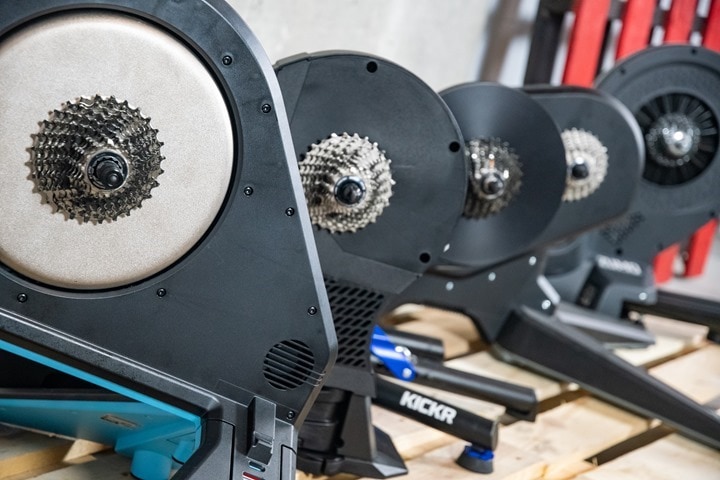
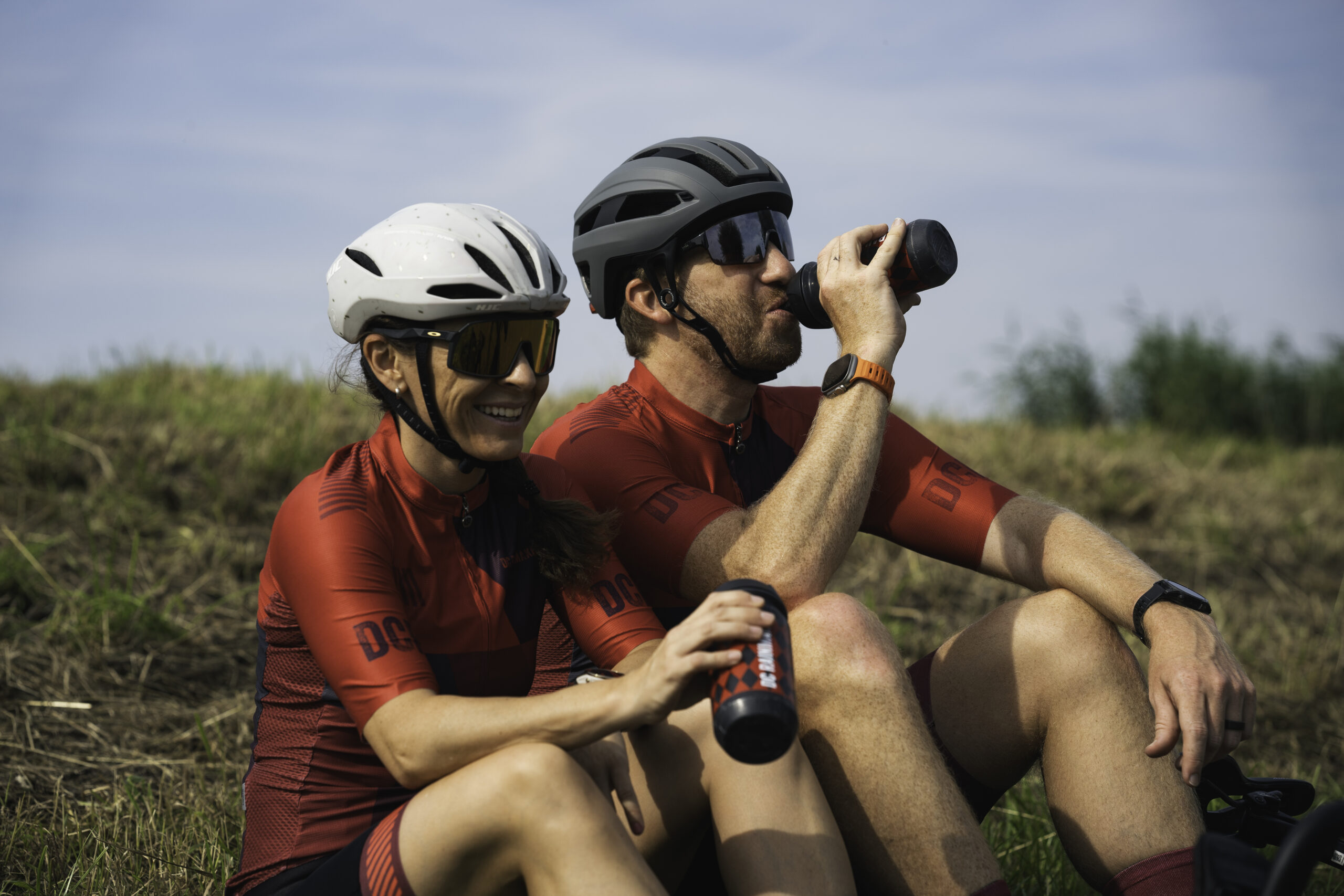
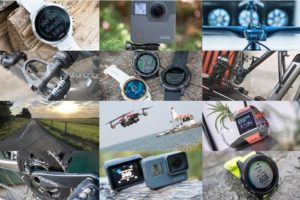
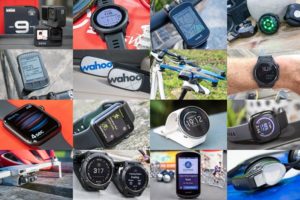

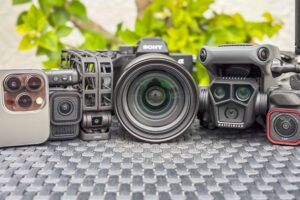

As I understand it, Ace no longer uses the ELEMNT Companion app but has been moved over to the more general Wahoo app. I presume these new Roam/Bolt v3 computers will follow the Ace.
But what will happen to their old computers? Will they be moved over the Wahoo app, stay on ELEMNT Companion but still updated in parallel, or will they be more or less abandoned? ELEMNT Companion is awfully buggy so I’d hope these would also be transitioned over and not left to rot.
Does the radar require that absolutely huge rubber band mount, it can’t say be twisted off to expose a standard quarter turn mount underneath? PRetty disappointing if it only works with the original mount.
Abandoned? Like my Kickr V5 and virtual shifting? Probably.
I’m still sour on all things Wahoo. This silliness makes spring GPS decisions even easier.
Wahoo says they’ll be moving their existing ELEMNT units into the Wahoo app as well.
Such a huge step backwards in transflective display tech. How can Wahoo go from great contrast in sunlight with no backlight to unreadable in sunlight without a backlight. Who was asking for 16M colours anyway?
Agreed. This is a big step back if true, and I would like to see some comparisons in sunlight between v2 and v3 units.
Bigger pic comparison. Direct sunlight, though lower in horizon.
Thanks. And just to clarify, is the backlight on the highest setting on the v3 models, and is it off on the v2 models?
Correct. On Wahoo’s newest models, it’s basically required to be on (akin to the Edge 1050, which is technically speaking also always-on, just at varying levels). On the older models, it’s really only on at night.
yeah i was reading that section with confusion, have had 3 different bike computers in the last 10 years (latest is a roam 2) and never once run backlight during the day.
is it any wonder if the battery life is miserably missing targets if it can’t run without the backlight?!
Does the new Bolt have the rubber buttons (which kept failing on the V2) or does it have the hard buttons like the Roam 2?
I’d like to see Wahoo collaborate with Amazfit on the hardware for a bike computer. Wahoo could focus on their software integration, and turn Amazfit loose with the hardware spec sheet.
The value for money in some of the Amazfit products is crazy. I’d love to see some of that amazing value in a Wahoo bike computer. I’m not sure this current Wahoo lineup is it.
I feel like Coros would be a better fit for a collaboration. Amazfit has pretty good hardware, but they’ve been specializing in the AMOLED type devices and have no experience with the bike computer side of things. Coros at least has some experience with their Dura and most of their lineup is MIP based.
What is that thing on the left side of your handle bar in that one pic? Like likes a clamp or something with a big handle?
Yup, GoPro clamp. I had a GoPro on dual-recording with the Garmin Varia Vue that I was gathering footage for.
Because that Canyon bike doesn’t have round handlebars, doing another standard-issue mount is tricky (and dual mounts that I have aren’t quite as versatile for quickly getting cameras on/off the bike).
Any word on whether Wahoo is going to allow Function 3 (middle button) to work with Di2?
I put in a feature request with them a few months ago, so they know but are mum on this.
It works with SRAM AXS. Would be nice to have parity on both platforms.
I switched from Garmin to Wahoo when the Bolt V1 was released.
And I was very happy because while Garmin software was crap Wahoo just worked.
Also I like the user interface with the buttons a lot and I am also a fan of the LEDs.
But nowadays Wahoo lost software quality at all.
There is now release where Ray points out how bad it is.
On existing units they break functions and are not able to fix these within a one year time frame. I have no words for this.
So it seems I will try out a Garmin as next bike computer.
It’s annoying that Wahoo chose to use the fingerprint icon (that typically represents some kind of fingerprint-based security tech) to show whether the unit has a touchscreen or not.
And it’s a shame that the computers lost the LED strips. They were quite useful for metrics and navigation and, most importantly, made the computers unique. Garmins have features and ecosystem, Karoo has an awesome touchscreen, Coros has battery life. Wahoo used to have LEDs and now has… nothing?
Agreed, the LEDs were a killer feature of the original Wahoo computers. I used them for both power and HR zones and it was incredibly useful to be able to see what zone you were in when training, particularly in low light.
It’s sad to see bike computers moving to screen tech that isn’t really suited to outdoor use.
The existing lineup of Wahoo bike computers has always been second-to-none for readability, even in direct sun, with no need for a backlight. Always crystal clear.
Sure, the colour palette may be limited, but given a choice between colour depth and battery life I know what I’d choose.
Hi!
I’ve been reading this blog for few years, but never wrote a comment here. So this is the time ;)
Actually, I would like to ask you for a recommendation: I’m considering buying a bike computer. I’m thinking about one of these: Garmin Edge 840, Wahoo Roam 3 and Karoo 3. For a daily use, running/workouts I use Fenix 7, so my first thought was Edge 840 (to stay in Garmin’s ecosystem), but I’ve read opinions that Garmin doesn’t have to be the best and only choice. And I’m confused a little bit :(
In general I need this bike computer as a navigation + to have all of those fancy stats (which I just love ;) and can get also from my Fenix, but I see them after the ride). I considered also Explorer 2, as it was recommended because of the navigation experience, but I’d read it has just basics stats and only 2 riding profiles and I like also MTB and gravel rides.
So if anyone of you can share your thoughts and suggestion, I would be grateful :)
I own a Bolt v2 and a Rival watch. I’m sad that they dropped the Rival/watch market because I want to keep my cycling and other sports in the same ecosystem. It seems that, right now, my only options (brands with GPS units and watches) are Garmin or Coros, right? And Dura was… well, not a good product at launch time.
Hey Ray, am I understanding this correctly, the firmware on the Bolt V2 will remain different from the software on the V3?
I’d love to have the bar at the opt on all screens to see battery and the clock,
Hoping that comes to V2.
What about cycling dynamics from pedals, any news there? The assioma data would be great to get. I am a nerd and bought a Garmin to get it. But I don’t like the non-intuitive Garmin menus etc..